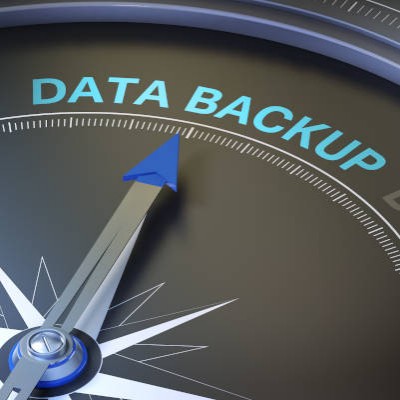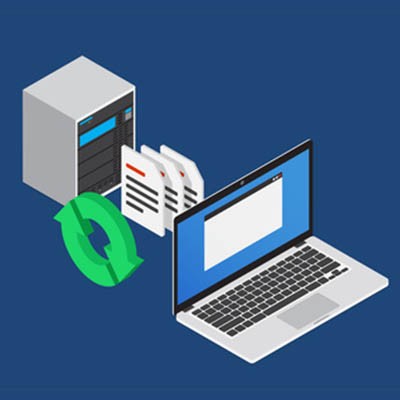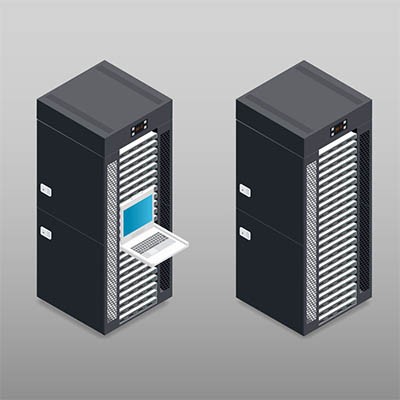We cover data backup and disaster recovery quite a bit, and you might be familiar with some of the terms and strategies we discuss. Today, we’re taking a deeper dive into the 3-2-1 rule and its crucial role in your business’ disaster recovery plan. Let's explore how the 3-2-1 rule can strengthen or weaken your data infrastructure.
USA Computer Services Blog
There is an almost comical laundry list of problems that all businesses should be prepared for, but what’s not funny whatsoever is what happens when you fail to do so. The term “BDR” is often used as an umbrella term to describe what kind of preparation your organization needs, and today, we want to dive into some of the details that you should know.
When it comes to your business’ data backup and disaster recovery, you want to have clear outcomes that you aim for, as well as metrics that help you gauge success. Today, we want to highlight some of the most important metrics associated with data backup and disaster recovery, as well as the importance of testing your systems. Trust us when we say that a solid data backup and disaster recovery strategy is crucial to the success of any business—including yours.
Data and technology drive modern business, and as such, data backup and disaster recovery are crucial to the continued success of any organization. There is so much at risk that it would be counterproductive to ignore these unforeseen disasters. Disaster Recovery as a Service, or DRaaS, is an effective way to combat the omnipresent threat of data loss.
We focus pretty heavily on data backup as an important solution that all businesses should use, and for good reason. It can be all the difference between losing your business’ future or preserving it. We know you don’t like to hear it, but investing in a proper data backup solution is well worth the cost, even if you never have to use it.
We often use the term “redundant” to describe technology, and it’s easy to see this word and think about it in a negative way. However, in business technology, the exact opposite is true, and redundancy is widely seen as not just an important component of any successful IT strategy, but a critical one. What does redundancy mean to your business technology, and how can you make sure you implement it in the appropriate way?
One of the best investments you can make in your IT infrastructure is implementing a data backup and disaster recovery solution. Not only is it a crucial part of any business continuity plan, but it also helps to future-proof your business in the event of a potentially disastrous scenario. There are three big reasons why you should consider implementing data backup and disaster recovery, and if you fail to do so, you are putting your company at risk for no real reason.
If you’re at all familiar with us, you’re probably aware of how highly we rank data backup. If your business creates or stores any data (which we guarantee it does) you need to have a backup to protect it, as simple as that. Let’s take a few moments to review how a BDR (Backup and Disaster Recovery) can benefit your business and its long-term continuity.
We tell every business owner we come into contact with the same thing: If you haven’t done so yet, you‘ll want to establish a data backup strategy. Some businesses are really small, some operate in industries where the cost of backing up data is seemingly prohibitive to the success of the business. To the people that operate those businesses, we repeat: If you haven’t done so yet, you‘ll want to establish a data backup strategy. Let’s examine why.
Your business’ data is extremely important to the livelihood of your business and as a result, you need to have plans in place to protect it. Sure, you can invest in all the top notch cybersecurity tools and services, and they may keep you from getting your data stolen or corrupted, but what happens if something terrible happens to the servers that it is stored on? No level of threat detection is going to save a server if it is charred, under water, or its components are completely fried.
It’s not always hackers that create dangerous situations for your organization. Threats can come from even unforeseen locations, such as your business’s network. No matter what the threat is, though, you have to be extremely careful about the little things that spell doom for organizations just like yours. One of these is failing to have a data backup solution in place.
Chances are you’ve found yourself in a situation where you have accidentally deleted an important file. However, it’s possible that you can restore the data, depending on the scenario. We’ll walk you through the processes required just in case you find yourself scratching your head over a potentially deleted file.
World Backup Day is a time when every business should contemplate whether or not they have proper data backup strategies in place. Considering it was about a month ago, did your organization take the time to think about it? Granted, there isn’t a single day in the year that could explain what your data means to your business, the importance of data backup, and that your businesses should always do what it can to avoid data loss.
It’s no surprise that businesses will avoid spending money on things they don’t need at all costs. While it might seem harmless to avoid investing in certain technology solutions that just aren’t needed, one that you absolutely cannot go without is data backup and disaster recovery. A business that doesn’t survive disasters can’t succeed, so if you want a future for your business, it’s important to invest now before you can’t later on.
As the cloud has increased in popularity, companies have moved a lot of their computing off of their local networks to cloud-hosted environments. Because of this trend, it’s become an extremely popular choice for data backup and disaster recovery solutions. In fact, it’s the preferred use of cloud-hosted systems, but unless you know why these types of environments are great for data backup and disaster recovery, you might not realize its full potential for backup and collaboration.
Data backup has the nasty misconception that it’s only worth having if you actually use it, but this isn’t necessarily the case. Businesses let this misconception get in the way of an important aspect of business continuity, simply because they don’t want to waste money on something that they won’t actually need. Little do they know that data backup is the only thing standing in the way of your organization failing forever.
Anything that can go wrong will go wrong. This is what it means to believe in Murphy’s Law, a rather bleak and somewhat nihilistic view of how the world works. Unfortunately, when it comes to your business’ important data, you have to subscribe to this mindset in order to prepare yourself for the worst-case scenario. Every business has its differences, but the end result will remain largely the same--a data backup system customized to fit your organization’s specific needs.
There is always the constant threat of data loss looming over your business. Even though the idea might be terrifying, you need to consider all of the many possible ways that crippling data loss can occur. To combat these issues head-on, you should implement a backup solution that adheres to industry best practices. We’ll help you determine what your business’ requirements are for a quality data backup solution.




















